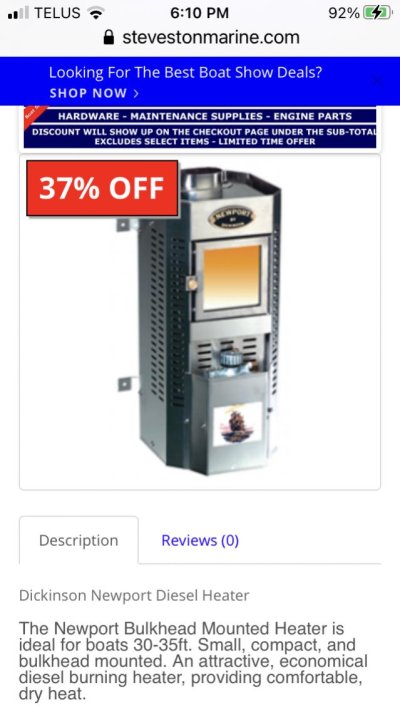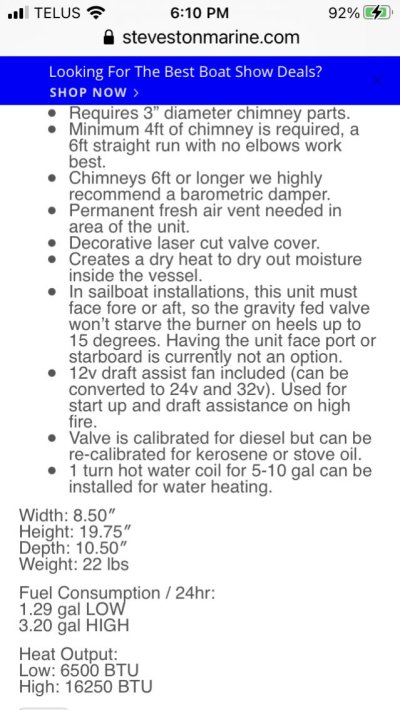Most people would agree that I’m fairly experienced with dealing with keeping warm and dry on a boat. We have owned a couple of trawlers and have spent several hundred nights aboard when heat was required. Our experience on the boats consists of twenty years of cruising Alaska and about ten years here in the Northern Puget Sound area. Our most recent adventure of living aboard full time was just that, living aboard full time for 18 months. I think that I’ve tried every method of heat, from ceramic, heaters, oil filled radiator, circulating hydronic and forced air Wabasto heaters and then there the good old reliable “Dickinson”. We’ve owned three boats where we’ve had a Dickinson heater and now I’m in the process of installing another in our current boat. Our new Dickinson Alaskan heater will be installed with a heat robber on the exhaust stack and a heat coil to circulate water into a radiator type forced air system in the pilot house. There are so many advantages to the Dickinson! For starters it’s a nice dry heat that simply sucks the humidity out of your boat, it’s absolutely quiet, doesn’t require any power if installed with a gravity fed fuel tank or at the least very little +12 volt power. As far as the amount of fuel required, it’s truly minimal. We have run our Dickinson heaters for over thirty days at a time several times with out any problems! Last winter we heated our boat exclusively with a Wabasto hydronic system, it used a lot fuel and made to much noise for me. Did I mention that maintenance is a bit expensive as well. I know that I sound a bit like a salesman, but I promise you I’m not. Just an avid boater. In the event that you might be interested in installing a Dickinson heater I do have a good contact for a Dickinson Lofoten unit. My son purchase on
e but has never fired it up, to install in his cabin up in Alaska. I tried to talk him out of purchasing it because it simply couldn’t provide enough heat in his cabin in the bush. He instead opted to use a Renia sp? If you’d be interested I’m sure that he would cut you a VERY decent deal. I can put you in contact with him. Rob


